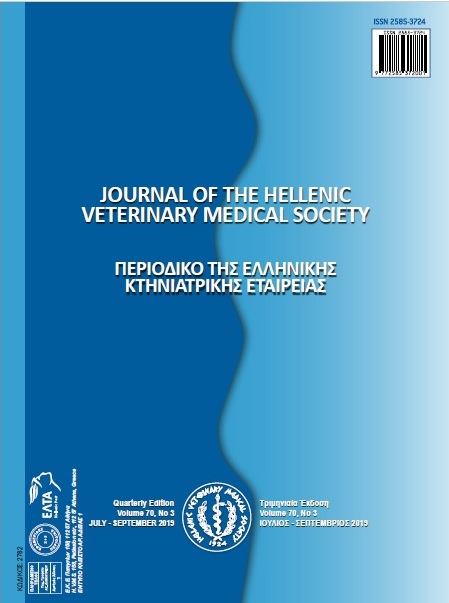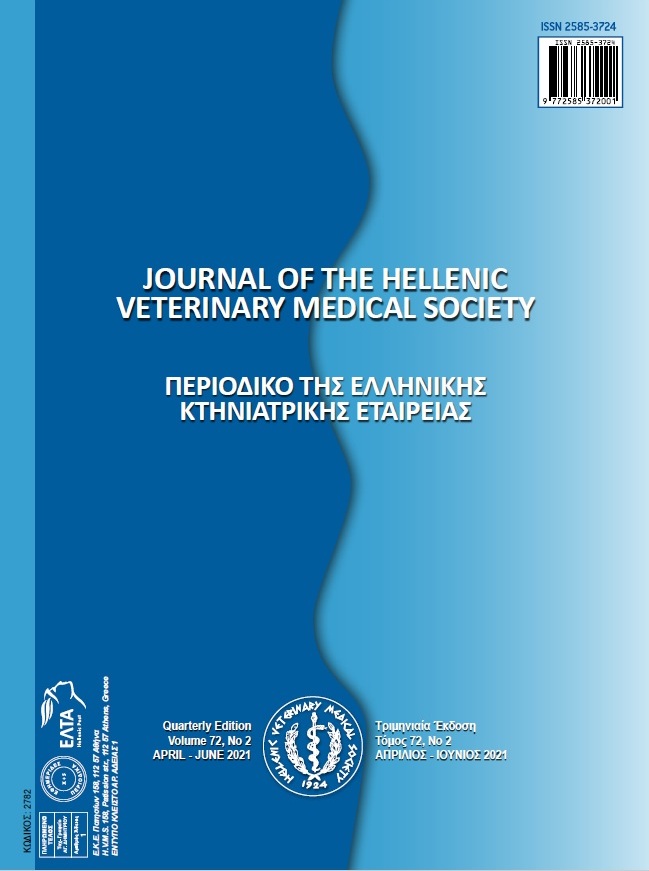Spinal nephroblastoma in a dog: a case report

Abstract
The case report presents the clinical, clinicopathological, diagnostic imaging and histopathological findings of spinal cord nephroblastoma in a dog. It was admitted with a 2-week history of a “weight-bearing” lameness of the left posterior limb that evolved to paraplegia within hours. Neurological examination showed spastic paraplegia compatible with a T3-L3 spinal cord lesion. Differential diagnosis included ischemic myelopathy, myelitis and acute spinal cord compression. The spinal radiographs and cerebrospinal fluid analysis were unremarkable. Cisternal myelography indicated a focal intradural-extramedullary lesion at the level of T12 vertebra. Further diagnostic investigation was not performed because the owner decided to proceed to euthanasia. Histopathological examination of the spinal cord confirmed the diagnosis of intraspinal nephroblastoma.
Article Details
- How to Cite
-
KAMPOURI, P., KARIKI, A., BAKA, R., PATSIKAS, M., & POLIZOPOULOU, Z. (2019). Spinal nephroblastoma in a dog: a case report. Journal of the Hellenic Veterinary Medical Society, 70(3), 1737–1742. https://doi.org/10.12681/jhvms.21804
- Issue
- Vol. 70 No. 3 (2019)
- Section
- Case Report

This work is licensed under a Creative Commons Attribution-NonCommercial 4.0 International License.
Authors who publish with this journal agree to the following terms:
· Authors retain copyright and grant the journal right of first publication with the work simultaneously licensed under a Creative Commons Attribution Non-Commercial License that allows others to share the work with an acknowledgement of the work's authorship and initial publication in this journal.
· Authors are able to enter into separate, additional contractual arrangements for the non-exclusive distribution of the journal's published version of the work (e.g. post it to an institutional repository or publish it in a book), with an acknowledgement of its initial publication in this journal.
· Authors are permitted and encouraged to post their work online (preferably in institutional repositories or on their website) prior to and during the submission process, as it can lead to productive exchanges, as well as earlier and greater citation of published work.



